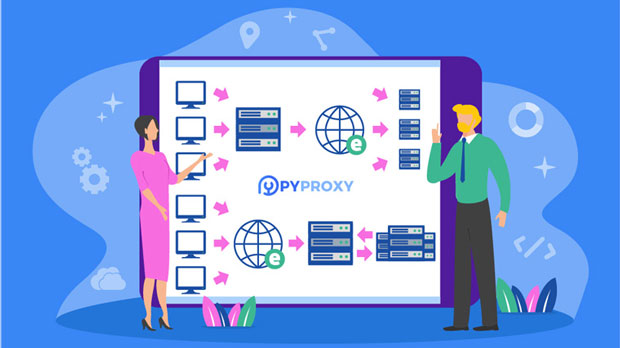In the world of web scraping, automation, and network requests, proxies play a significant role in ensuring anonymity, preventing IP bans, and providing access to geo-restricted content. Resty, a popular HTTP client in Go programming, is often used for making HTTP requests. However, when it comes to handling sock s5 proxies, a common question arises: does Resty support automatic switching of SOCKS5 proxies? At the core, Resty itself does not natively support the automatic switching of SOCKS5 proxies, but it can be configured to work with SOCKS5 proxies manually. To automate proxy switching, additional configurations or custom implementations may be needed. This article will explore the challenges and potential solutions for integrating socks5 proxy switching into Resty-based applications.Understanding SOCKS5 Proxy and Its RoleBefore diving into Resty’s capabilities, it's essential to understand the role of a SOCKS5 proxy. SOCKS5 proxies are a versatile and secure method for routing network traffic, offering both anonymity and flexibility. They are commonly used for bypassing firewalls, masking IP addresses, or accessing geo-restricted services.One key advantage of SOCKS5 proxies is their ability to support various types of traffic, including HTTP, FTP, and even UDP, making them more flexible than HTTP proxies. Unlike traditional HTTP proxies, which may only support specific types of requests, SOCKS5 proxies route all network traffic through a proxy server, providing more comprehensive privacy and security.For users implementing Resty, integrating a SOCKS5 proxy can help circumvent network restrictions or offer anonymity while making HTTP requests.Resty HTTP Client OverviewResty is a Go HTTP client library designed to simplify the process of making HTTP requests. It provides an easy-to-use interface for sending GET, POST, PUT, DELETE, and other HTTP requests, handling responses, and managing headers and cookies.Resty supports customization of network settings such as timeouts, retries, and even the ability to work with custom HTTP clients. However, while Resty excels in managing HTTP requests, it doesn’t natively offer features for advanced proxy management, such as automatic proxy switching.SOCKS5 Proxy Configuration in RestyAlthough Resty does not natively support automatic SOCKS5 proxy switching, it does allow manual configuration of SOCKS5 proxies. Using Go's standard library or third-party packages, users can configure Resty to route HTTP requests through a SOCKS5 proxy.To integrate a SOCKS5 proxy with Resty, developers can utilize the "golang.org/x/net/proxy" package, which provides SOCKS5 proxy support. Here's a basic example of configuring a Resty client with a SOCKS5 proxy:```gopackage mainimport ( "log" "github.com/go-resty/resty/v2" "golang.org/x/net/proxy")func main() { // Create a new proxy dialer dialer, err := proxy.SOCKS5("tcp", "localhost:1080", nil, proxy.Direct) if err != nil { log.Fatal(err) } // Create a Resty client and set the proxy client := resty.New() client.SetTransport(&http.Transport{ Dial: dialer.Dial, }) // Perform a GET request resp, err := client.R().Get("http:// PYPROXY.com") if err != nil { log.Fatal(err) } log.Println(resp.Status())}```In this example, the SOCKS5 proxy is manually set in the `Dial` function, and all outgoing HTTP requests from Resty are routed through this proxy. However, this method does not support automatic switching of SOCKS5 proxies, which is a limitation for scenarios requiring dynamic proxy rotation.Challenges with Automatic Proxy SwitchingAutomatic SOCKS5 proxy switching is beneficial in many real-world applications, especially when dealing with high-volume network requests that need to avoid detection or rate-limiting. However, implementing this feature in Resty presents several challenges:1. Lack of Built-in Support: As mentioned earlier, Resty does not have built-in support for automatic proxy switching. Developers need to create their own mechanisms to handle proxy rotation. 2. Managing Proxy Lists: To switch proxies automatically, users would need to manage a list of SOCKS5 proxies, including their availability and reliability. This adds complexity to the application as it requires periodic checks of proxy status, handling failures, and updating the proxy list.3. Rate Limiting and Detection: Web scraping or network automation often involves making numerous requests in a short amount of time. If the same proxy is used too frequently, it can trigger rate-limiting or detection mechanisms. Automatically switching proxies could help circumvent these restrictions, but it requires careful management to avoid being blocked by the target server.Potential Solutions for Automatic Proxy SwitchingWhile Resty does not support automatic SOCKS5 proxy switching out of the box, there are potential solutions that can be implemented:1. Custom Proxy Rotation Logic: Developers can create custom logic to rotate proxies at regular intervals or after a certain number of requests. This can be achieved by maintaining a list of SOCKS5 proxies and selecting one at random or based on availability. Once a proxy is used, it can be replaced with another from the list for the next request.2. Proxy Pooling with Failover: Implementing a proxy pool with failover support is another approach. If a proxy fails or gets blocked, the system can automatically switch to another proxy from the pool. This could be done using a queue system or by dynamically fetching fresh proxies from a third-party provider.3. Third-Party Proxy Libraries: Some Go libraries provide automatic proxy switching functionality, which can be integrated into Resty. These libraries often include built-in proxy pools and failover mechanisms, making it easier to manage proxy rotation.4. REST API for Proxy Management: Another solution is to create a custom REST API that manages proxy rotation. The application can periodically call this API to get a new proxy to use for the next set of requests. This approach decouples proxy management from the Resty client, allowing for easier updates and maintenance.Resty is a powerful HTTP client in Go, but it lacks native support for automatic SOCKS5 proxy switching. While it does allow for manual proxy configuration, users who need dynamic proxy rotation must implement custom solutions. By creating custom proxy rotation logic, utilizing proxy pools with failover support, or integrating third-party libraries, developers can achieve the functionality they need for automatic proxy switching.Ultimately, the choice of solution will depend on the specific requirements of the project, including the need for anonymity, the volume of requests, and the reliability of the proxies used. Although Resty may not natively support this feature, the flexibility of Go allows developers to create efficient, scalable solutions for proxy management.
May 16, 2025


































































